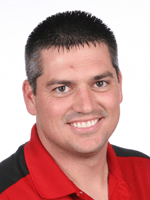
Regional Calf Report: Ohio – Dr. Owen Mickley, Vita Plus
 By Dr. Owen Mickley, Vita Plus dairy specialist
By Dr. Owen Mickley, Vita Plus dairy specialistWhat will winter have in store for us this year? With last year’s brutally cold winter still fresh in our minds, are we prepared to deal with the winter challenges we’ll face this year?
Let’s go back to the basics as these fundamentals are key to our success.
Are we getting enough clean, quality colostrum into calves in a timely manner? Across the Midwest, we have observed sporadic challenges with cows not producing enough quality colostrum for the calf. Several factors play into this. While you address those issues, do you have a plan in place to deal with the shortage? Working with your herd’s veterinarian to monitor blood serum total protein is a good way to monitor the timing, quality, and quantity side of the colostrum equation.
In these colder conditions, calves are challenged to maintain growth rates. The goal is still to double the calf’s birth weight by the time it’s weaned (or a minimum of 60 days of age). Feed efficiency is greater earlier in life and data supports increased milk yield for calves with higher average daily gains (ADG).
Cornell University research suggests that, for every pound of ADG before weaning, cows produce about 1,000 pounds more milk. The Miner Institute has produced some work which supports this increase as well. The primary source of these bodyweight gains is liquid feed (milk or milk replacer).
Also, don’t overlook the timing of feedings. Are calves waiting 14 hours or more between the night and morning feedings? Adding a properly timed third feeding is worth consideration. Again, we need to assess the quantity, quality and timing of these feedings.
Now is a good time to check your calves’ environments. Keeping them clean and dry is a must and calf jackets help – especially during those long cold periods.
As heifers transition to a forage-based diet, are we monitoring intakes and growth rates? Higher forage diets can limit ADG and, with colder temperatures, the heifer uses more energy for maintenance than growth. This combination can delay the age at first calving.
The bottom line is reduced growth rates (especially pre-weaning) – for whatever reason – can limit the ability of replacements to quickly contribute to herd performance.
| Category: |
Calf and heifer nutrition Starting Strong - Calf Care |

